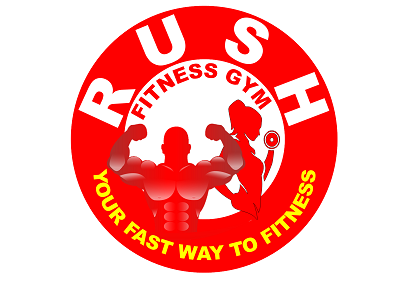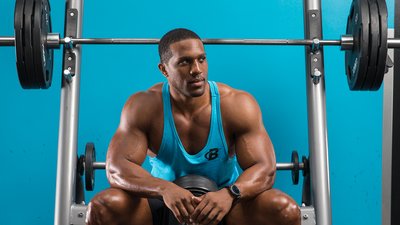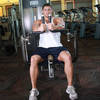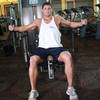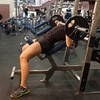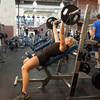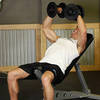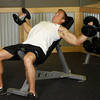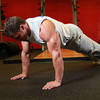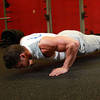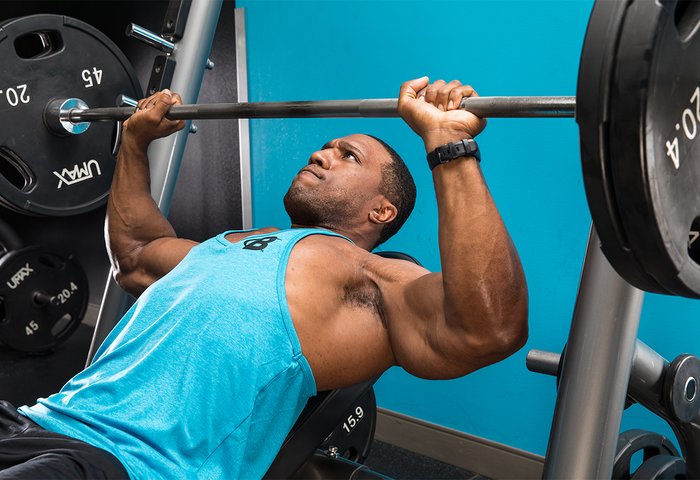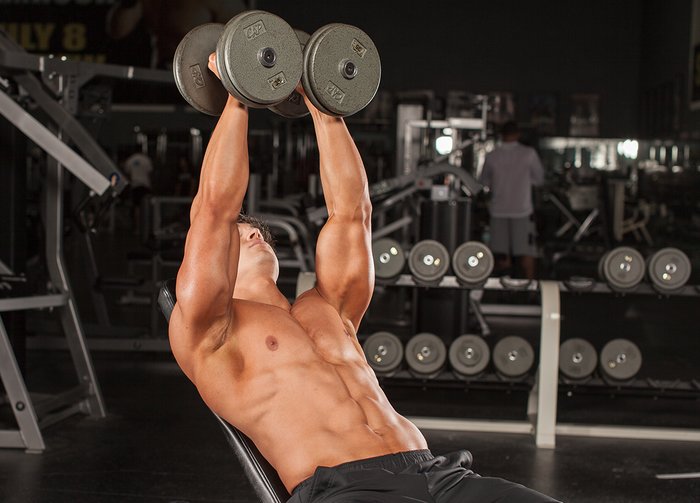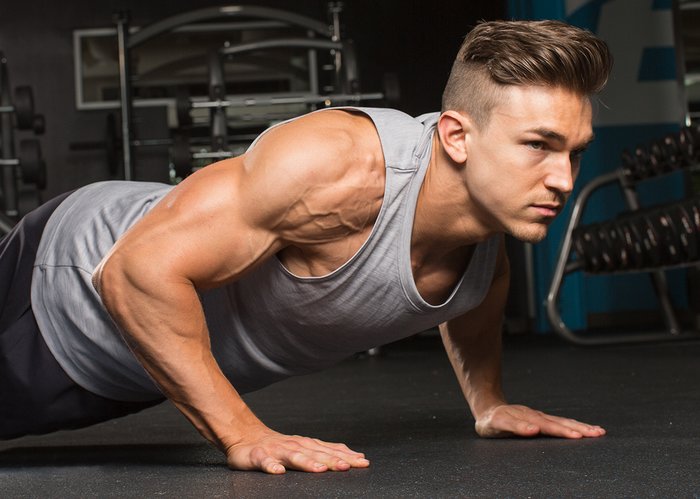Earn big lifts and big gains with this comprehensive guide to how bodybuilders need to bench. Get your feet off the bench, settle in, and move some weight!
Among the big three movements that lifters use to gauge strength, most of us get to know the bench press first. Because it's easy, right? All you do is lay down, un-rack the bar, and press your brains out… until that day when you get hurt.
Listen: To lift big, and to lift a long time, you've got to lift right.
Here are 5 pointers that'll help you add size and strength to your pecs, delts, triceps—even your lats. But, hey, if you're not interested in developing a strong upper body, give Jazzercise a try.
1. Consider Your Grip
Although the width of your grip is largely a matter of preference, a balanced grip will also balance tension on your shoulders and triceps. Too wide a grip puts excessive amounts of stress on the shoulders: Too narrow a grip can beat up on the elbows.
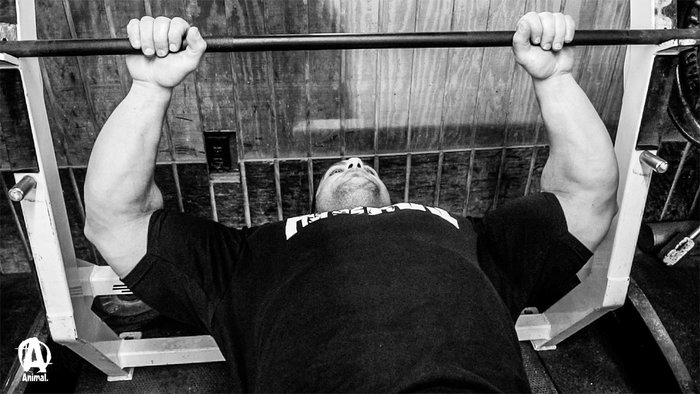
Unfortunately, what feels like a balanced grip to you might not work for someone else. Experiment to find out what feel like the right width for you. If you feel shoulder or elbow pain, your grip may be either too wide or too narrow.
To further refine your grip, you can also either wrap your thumb around the bar or leaving it open, which is often referred to as a "suicide grip." Once again, the choice is yours, but using an open grip can tend to place too much stress on the wrists in my experience. I recommend wrapping your thumb and closing your grip firmly around the bar when benching.
2. Arch Your Back
To get the most out of a bench press, you absolutely have to arch your back so you can shift tension toward the upper part of your back and your traps. Then, you want to contract your scapula as if you're trying to make your shoulder blades touch each other. This is crucial for both strength and safety while benching.
If you simply lie with your back flat on the bench without arching your back or contracting your shoulder blades, your arms and shoulders will do most of the work, while your chest just sort of goes through the motions. Your shoulder will also probably hate you. That's a perfect way to end up with a weaker bench press and smaller pecs.
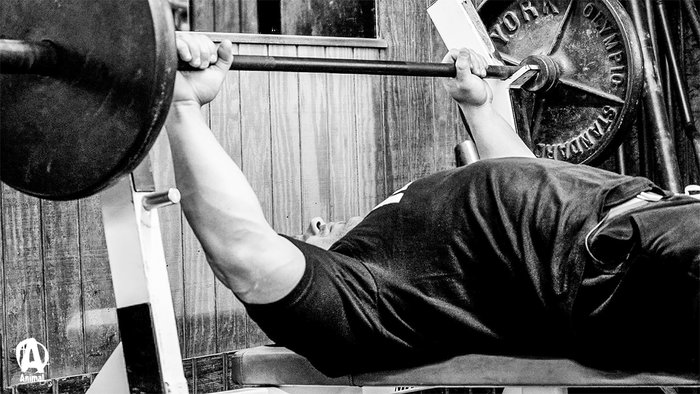
3. Tuck Your Elbows
Now that your grip is correct, your back is arched, and your scapulae are contracted, it’s time to unrack and lower the weight. The natural tendency at this point is to either stick your elbows out or keep them tucked in to your side. If you flare them out, you're going to stress your shoulders. If you keep them tucked in, you'll involve your lats and better recruit your pecs.
Tucking in your elbows sets you up for a more powerful drive—and it's safer. I like to compare it to squatting with the focus on your hips instead of your knees. Anytime you do compound movements, you always want to recruit the biggest and strongest joints and muscles so you can safely move the most weight.
4. Aim For Your Nipples
Now let's talk about the position of the bar as you lower it to your chest. You need to be sure you don't bring the bar too close or too far from your neck at the bottom of the movement. Many old-school bodybuilders aim higher up, dropping the bar near their throat, which causes them to flare the elbows. This often feel entirely unnatural to most of us, reduces the amount of weight you can lift, and increases the risk of shoulder injury.
If, on the other hand, you bring the bar too far down toward your midsection, you risk losing control of the weight altogether. For best results, aim for the bar to land in line with your nipples. This will help you keep your elbows tucked in, build tension on the way down, and explode on the way up.
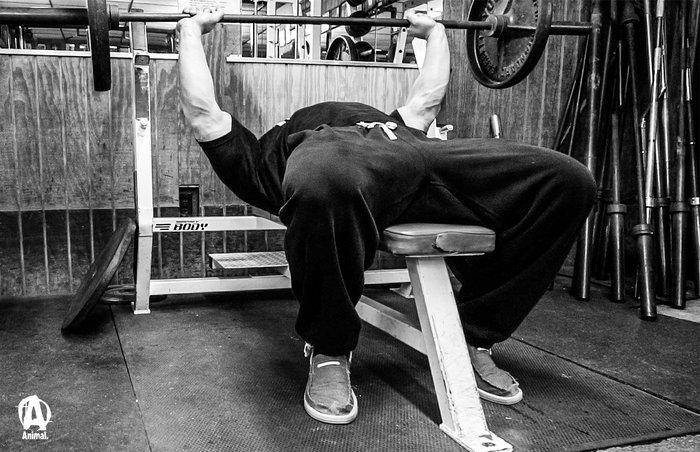
And always bring the bar down until it touches your chest. There is no benefit whatsoever in stopping part of the way down. Full range of movement results in full development.
5. Avoid Locking At The Top
Now that you have all the proper bench mechanics in place, the only thing left to do is press. Keep your chest high, your elbows in, and your scapula contracted. Drive through your lats and chest, and thrust the bar toward the ceiling.
If you're benching for muscle gain or are a bodybuilder, I recommend that you don't lock out your elbows at the top of the movement. Stopping just short of locking maintains constant tension on your chest and minimizes stress on your elbows.
If, on the other hand, you're a powerlifter, then do what your sport demands. And if you're just someone who wants to be both strong as hell and look the part, then take what you've learned here and make your next chest day matter!
Source: bodybuilding.com
Don't forget to share and like!
